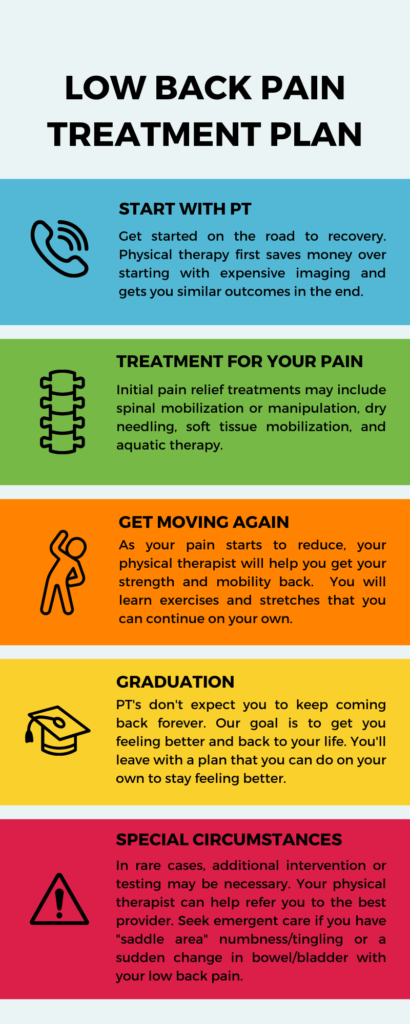Lower back pain can sneak up on you when you least expect it, turning everyday tasks into challenging feats. Imagine bending down to pick something up and feeling a sharp, uncomfortable twinge.
You’re not alone; millions experience this discomfort, and it can seriously impact your quality of life. But what if there was a way to protect yourself from this common ailment? You’re in the right place. We’ve crafted a comprehensive Lower Back Pain Prevention Plan that targets the root causes and helps you maintain a pain-free life.
This isn’t just a list of do’s and don’ts; it’s a practical guide designed to fit seamlessly into your routine. By following our plan, you’ll not only understand why lower back pain happens but also take proactive steps to prevent it. Discover tips, tricks, and insights that are grounded in science yet simple to implement. As you read further, you’ll gain the knowledge to keep your back strong and healthy. Don’t let back pain control your life—take control now. Dive into the details and equip yourself with the tools you need to stay active and pain-free.
Common Causes Of Lower Back Pain
Lower back pain affects millions. Understanding its causes helps in prevention. Common triggers range from daily habits to lifestyle choices. Addressing these can reduce discomfort significantly.
Poor Posture
Sitting or standing incorrectly strains the back. Slouching adds pressure to spinal discs. This leads to chronic pain over time. Maintain a straight, aligned spine. This distributes weight evenly. Avoid prolonged bending or twisting.
Muscle Strain
Lifting heavy objects improperly strains muscles. Sudden movements can tear muscle fibers. This results in pain or spasms. Stretch before activities to warm up muscles. Use proper techniques for lifting. Strengthen core muscles regularly.
Sedentary Lifestyle
Lack of activity weakens back muscles. Sitting for long periods contributes to stiffness. This can lead to pain and discomfort. Incorporate daily exercise routines. Walking or swimming helps maintain flexibility. Stretch regularly to keep muscles limber.
Lifestyle Changes For Relief
Lower back pain can disrupt daily life. Simple lifestyle changes can help. These changes focus on overall well-being. They also reduce pain and discomfort. By integrating exercise, diet, and stress management, you can find relief.
Exercise Routines
Regular exercise strengthens the lower back. It also improves flexibility. Start with low-impact activities. Walking and swimming are excellent choices. Yoga and Pilates enhance core strength. They support your spine. Aim for 30 minutes of activity daily. Consistency is key for results.
Healthy Diet
A balanced diet supports back health. Nutrient-rich foods reduce inflammation. Include fruits, vegetables, and whole grains. Lean proteins and healthy fats are also important. Stay hydrated by drinking enough water. Avoid processed and sugary foods. They can worsen inflammation and pain.
Stress Management
Stress can increase muscle tension. This often leads to back pain. Practice relaxation techniques. Deep breathing and meditation are effective. Spend time doing activities you enjoy. Laughter and relaxation reduce stress levels. Sleep is crucial for stress reduction. Aim for 7 to 9 hours of rest each night.
Ergonomic Solutions
Lower back pain often disrupts daily life. Ergonomic solutions can help. These solutions adjust your environment for better support and comfort. They focus on reducing strain on your back during daily tasks. By making simple changes to your workspace, you can prevent pain. Here are some tips to get started.
Choosing The Right Chair
The chair you use impacts your back health. Choose one with proper support. Look for a chair with adjustable height. The backrest should support your spine’s natural curve. Armrests should allow your shoulders to relax. Ensure your feet rest flat on the floor. These features help maintain good posture.
Desk Setup Tips
Your desk setup is crucial for back health. Position your computer monitor at eye level. This prevents neck strain. Keep your keyboard and mouse within easy reach. Your wrists should remain straight while typing. Organize desk items to avoid stretching. A clutter-free desk reduces unnecessary movements.
Proper Lifting Techniques
Lifting objects incorrectly can harm your back. Start by bending your knees, not your waist. Keep the object close to your body. Use your legs to lift, not your back. Avoid twisting your body while lifting. If an object is too heavy, ask for help. These techniques protect your lower back from injury.

Stretching And Strengthening Exercises
Stretching and strengthening exercises help prevent lower back pain by improving flexibility and muscle support. Regular practice can reduce tension and enhance posture, keeping your back healthy. These exercises are easy to integrate into daily routines and benefit overall spinal health.
Stretching and strengthening exercises are crucial components of any effective lower back pain prevention plan. These exercises not only improve flexibility but also build the muscle strength needed to support your spine. By integrating a routine that focuses on both stretching and core strengthening, you can significantly reduce your risk of back pain and enhance your overall well-being.
Daily Stretching Routine
A daily stretching routine can be transformative for back health. Start with simple stretches like the knee-to-chest stretch. Lie on your back, bring one knee to your chest, hold for 20 seconds, then switch legs. Incorporate the cat-cow stretch to enhance flexibility. Get on all fours, arch your back like a cat, then dip it like a cow. Repeat this movement ten times. These stretches take just a few minutes but can make a noticeable difference in how your back feels throughout the day. Make it a habit to perform them consistently.
Core Strengthening Exercises
Building core strength is essential for supporting your lower back. Begin with the plank exercise. Lie face down, then lift your body off the ground, balancing on your forearms and toes. Hold for 30 seconds and gradually increase the duration as your strength improves. Side planks are another excellent choice. Lie on your side, lift your body, and balance on one forearm and the side of your foot. Hold for 20 seconds on each side. Integrating these exercises into your routine can fortify your core muscles, providing the stability your back needs. Have you noticed how strong core muscles can alleviate the burden on your back?
Yoga For Back Health
Yoga is a powerful tool for maintaining a healthy back. Poses like the downward dog stretch your spine and relieve tension. Start on your hands and knees, lift your hips, and form an inverted V-shape with your body. The child’s pose is another gentle way to stretch your back. Kneel down, sit on your heels, and stretch your arms forward while resting your forehead on the ground. This position releases tension in the lower back. Practicing yoga regularly can enhance your flexibility and mental relaxation. Have you ever felt the calming effect of a yoga session on your mind and body? By adopting these stretching and strengthening exercises, you’re taking proactive steps to prevent lower back pain. Your back will thank you for the extra care and attention!
Alternative Therapies
When it comes to preventing lower back pain, alternative therapies offer a refreshing approach. Unlike conventional methods that may rely heavily on medication, these therapies often focus on holistic healing and balance. Incorporating them into your prevention plan could be the key to a healthier, more active lifestyle.
Chiropractic Care
Chiropractic care is often a go-to option for those seeking relief from back pain. Chiropractors use spinal adjustments to improve alignment and alleviate discomfort. Regular sessions can help keep your spine healthy and flexible. Have you ever wondered if your posture is affecting your back? A chiropractor can guide you on maintaining proper alignment throughout the day.
Picture this: a friend of mine struggled with back pain due to her desk job. After visiting a chiropractor, she noticed significant improvement. Her daily discomfort eased, and she felt more energetic. Could a session with a chiropractor be what you need to feel better?
Acupuncture Benefits
Acupuncture is another fascinating alternative therapy for back pain. By inserting tiny needles into specific points on your body, it aims to balance your energy and relieve tension. Many people swear by its calming effects. Have you ever considered how energy flow impacts your overall well-being?
A colleague tried acupuncture after years of chronic back pain. She was amazed at how quickly she felt relief. Her stress levels dropped, and she felt more centered. Could acupuncture be your ticket to a pain-free back?
Massage Therapy
Massage therapy is loved for its relaxing and therapeutic benefits. It helps reduce muscle tension and improve circulation, which can be crucial for preventing back pain. Imagine unwinding after a long day with a soothing massage. How often do you take time to relax and care for your muscles?
A family member found massage therapy invaluable for her back issues. After regular sessions, her muscles felt less tight, and her mobility improved. Are you giving your body the care it deserves with massage therapy?
Alternative therapies offer diverse options to address lower back pain. By exploring these methods, you may find a solution that works for you. Which therapy will you try to enhance your prevention plan?

When To Seek Professional Help
Understanding when to seek professional help for lower back pain is crucial. Not all pain indicates a serious problem. But sometimes, professional guidance is necessary. Identifying these moments can prevent further complications. Let’s explore key signs and when to consult a healthcare provider.
Recognizing Severe Symptoms
Some symptoms require immediate attention. Severe pain that doesn’t improve over time is a red flag. If the pain radiates down the legs, consult a doctor. Numbness or weakness in the legs also signals a problem. Difficulty controlling bladder or bowel functions needs urgent care. Persistent pain after an injury should not be ignored.
Consulting A Healthcare Provider
A healthcare provider can offer tailored advice. They assess the cause and suggest a personalized treatment plan. Early consultation can prevent chronic issues. They may recommend physical therapy or medication. For some, imaging tests like X-rays are necessary. Discussing symptoms openly helps in accurate diagnosis. Regular follow-ups ensure effective pain management.

Frequently Asked Questions
What Are The Preventive Measures For Low Back Pain?
Exercise regularly to strengthen core muscles and maintain flexibility. Practice good posture and use ergonomic furniture. Lift objects correctly, bending your knees and keeping your back straight. Maintain a healthy weight to reduce strain on your back. Take breaks during prolonged sitting or standing to stretch and move.
How To Avoid Low Back Pain?
Maintain a healthy weight to reduce strain on your back. Practice good posture while sitting and standing. Engage in regular exercise, focusing on strengthening core muscles. Lift objects properly by bending your knees, not your waist. Use ergonomic furniture to support your back.
How To Speed Up Recovery Of Lower Back Pain?
To speed up lower back pain recovery, rest adequately and apply ice or heat. Engage in gentle stretching and exercises. Maintain good posture and avoid heavy lifting. Consider physical therapy for personalized guidance. Stay hydrated and ensure a balanced diet to support healing.
Always consult a healthcare professional for persistent pain.
How To Increase Blood Flow To The Lower Back?
Try gentle stretching exercises like yoga or Pilates. Stay active with regular walking or swimming. Use heat therapy, such as a warm compress or heating pad, to improve circulation. Practice deep breathing techniques to enhance blood flow. Maintain proper hydration and a balanced diet for overall vascular health.
Conclusion
Lower back pain can be managed with a proper prevention plan. Consistent exercise strengthens muscles. Proper posture supports your spine. Healthy weight reduces strain. Regular stretching keeps muscles flexible. Choose ergonomic furniture for comfort. Listen to your body’s signals. Rest when needed.
Prioritize a balanced lifestyle. Remember, small changes lead to big results. Stay committed to your plan. Your back will thank you. Always consult a healthcare professional for tailored advice. Taking these steps can help keep your back pain-free.
